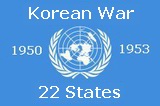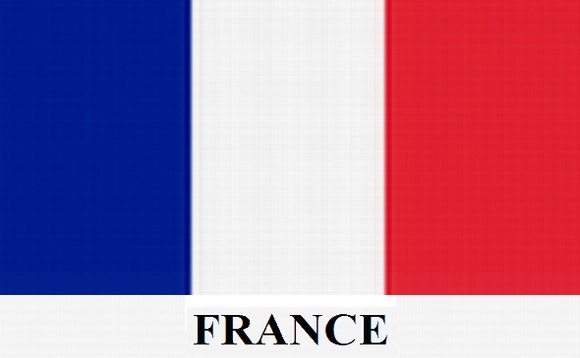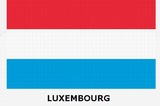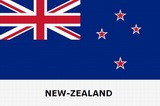Page 7 of 7
References and Notes
- Except concerning the British one. Great Britain was the second most important contributor to the UN Army in Korea.
- That is why very few studies dealt with the Thai, Ethiopian or Nederland participation in the Korean War, except in their own language, such as Akay, A. Kore’de Dirilen Şehit (The resuscitated martyr in Korea); Kültür ve Turizm Bakanlığı yayınları (Direction of Tourism and Culture): Ankara, Turkey, 1985. [Google Scholar] Many other studies are probably available in native languages of the UNO army contributors in Korea.
- Medium Powers are Independent States whose resources, population, territory and military capacity are important but cannot exercise truly their sovereignty, and really influence other powers in the World. These states have to accept the presence of allied military facilities on their own national territory. Weakened by the World War, defeat and Nazi occupation, France was compelled to ask the United States for financial assistance and to join the NATO in order to assure its security. However, France was still an important country, with a seat at the United Nations Security Council, and a cultural radiance throughout the world.
- Concerning the French contribution to the Korean conflict (in English), see Kenneth E. Hamburger, (Kenneth, E. Hamburger. Leadership in the Crucible—the Korean War battles of Twin Tunnels & Chipyong-ni; Texas A&M University Press: College Station, TX, USA, 2003; p. 258. [Google Scholar]) who offers interesting analyses, though limited to the above mentioned battles.
- For a short history of the French contribution to the Korean War (in French), see Quisefit, L. Le rôle de la France dans la guerre de Corée. Han’guksaron 2007, 45, 363–411. [Google Scholar]
- Lemoine, A. Un du BataillonMonclar; Amiot Dumont: Paris, France, 1951. [Google Scholar]
- Le Mire, O. L’Assaut de Crèvecoeur (Assault of Heartbreakridge); Aux Carrefours du Monde: Paris, France, 1956; p. 205. [Google Scholar]
- Perhaps there is more Ph.D. dissertation, sustained in France during this period. I’ve been only able to find these ones.
- Quisefit, L. Le rôle de la France dans la guerre de Corée: contribution à une histoire diplomatique et militaire des relations franco-coréennes. Unpublished Ph.D. Dissertation, Korean Studies Department, Paris Denis Diderot University, Paris, France, 2006. [Google Scholar]
- On the contrary, out of the five MA thesis sustained between 1980 and 1994 (at Paris 7 University), the two prepared about the French part in the Korean conflict, were made at Paris 7 University, in the field of Korean Studies, under the direction of the late Pr Li Ogg. The five MA theses I was able to find there were all made by French students. See the Bibliography of Ref. [9].
- This instability was caused by the structural organization of the Parliamentary regime of the French Fourth Republic, and by the communist agitation. A vote against the Cabinet, due to questions regarding Public employees’ salaries, and public and private education, finally provoked the dismissal of the Cabinet, facing a vote against its political choices.
- Vincent Auriol (1884–1966), French Président de la République from 1947 to 1954.
- Auriol, V. Mon septennat 1947–1954: Notes de journal; Gallimard: Paris, France, 1970; pp. 270–271. [Google Scholar]
- Henri Queuille (1884–1970). A moderate socialist, he belonged to the third important political force of the country during the 1950s.
- Grosser, A. La IVe République et sa politique extérieure, 3rd ed.; A. Colin: Paris, France, 1972. [Google Scholar]
- René Pleven (1901–1993), Member of the “Third Force”.
- French National Archives. Minutes of the meetings of the Conseil des Ministres (Council of Ministers). 19 July 1950; Box 4AG/4. [Google Scholar]
- Aron, R. Mémoires; Julliard: Paris, France, 1983. [Google Scholar] When listening the news about the Korean War, most of the Belgian population began to accumulate first necessity articles like canned or dried food, oil and soap. See also French Diplomatic Archives (MAE), Asie-Océanie, Korea, box 18.
- Amongst the bibliography concerning the Indochina War, see: Ruscio, A. La guerre française d’Indochine; Complexe: Brussels, Belgium, 1992; Vaïsse, M., Ed. L’Armée française dans la Guerre d’Indochine; Complexe: Brussels, Belgium, 2000; Regaud, N., Lechervy, C. Les Guerres d’Indochine, du Xe au XXe siècle; Puf: Paris, France, 1996; Valette, J. La Guerre d’Indochine, 1945–1954; Armand Colin: Paris, France, 1994; Planchais, J. L’empire embrasé, 1946/1962; Denoël: Paris, France, 1990.
- Concerning the financial aspect of the Indochina War, see: Tertrais, H. La Piastre et le Fusil; Comité pour l’histoire économique et financière de la France (Ministère de l’économie, des finances et de l’Industrie): Paris, France, 2002. [Google Scholar]
- Already June 26th in Korea.
- This ship participated in many operations, and even to the Inchŏn landings. Then, it was called back to Indochina.
- Quisefit, L. The Korean War as Seen from France: Public Opinion and Political Perception. SJKS 2011, 24, 137–158. [Google Scholar]
- Santamaria, Y. Le Parti de l’ennemi?—Le parti communiste français dans la lutte pour la paix (1947–1958) [Party of the Enemy? The French Communist Party in the Struggle for Peace]; Armand Colin: Paris, France, 2006. [Google Scholar]
- National Defense Committee. General Permanent Secretary of National Defense. French National Archives; 18 August 1950; box 4 AG / 247. p. 16. [Google Scholar]
- Moch, J. Une si longue vie; Robert Laffont: Paris, France, 1976; p. 435. [Google Scholar]
- Formerly, France had colonies. At the time, the Associated States (Etats Associés) were associated in a short-lived Union Française, aiming to create something like the British Commonwealth.
- Quisefit, L. Le bataillon français de Corée: un modèle unique d’intégration des réservistes dans le cadre d’une mission internationale d’après guerre (The French Battalion of Korea, a unique case of reserve integration during a post-war international mission). In Paper presented at the Conference Le concept de réserve militaire dans le monde: Culture, institution et perspectives (The Concept of Military Reserve in the World: culture, institutions and perspectives); organized by the National association of the Gendarmerie Reserve Officers, the National Association of Reserve Officers, and the Center for Defense History Studies. 2009; unpublished paper. [Google Scholar]
- Also called Indian Head Division due to its insignia, the 2nd US Infantry division was created in France (Bourmont, Haute-Marne) in 1917. It was the second division of the US Army involved in action in France, after the Big Red One (1st US Infantry Division), hence the 2nd Division motto.
- Ralph Monclar was the nom de guerre of General Raoul Magrin-Vernerey (1892–1964).
- Chip′yŏng-ni is sometimes called the Korean Gettysburg. This battle is, according to South Korean officers, one of the two most important battles of the War, with the Inch′ŏn landings.
- See Toland, J. In Mortal Combat; William Morrow and Co.: New York, NY, USA, 1991; p. 396. [Google Scholar]
- He replaced Colonel Freeman, who had been wounded.
- French Diplomatic Archives, Asia-Oceania, Korea, box no 64, f. 17. French Troops Tops, U.S. Colonel Asserts. Evening Star, Washington, DC, USA, 23 February 1951.
- The History of the United Nations forces in the Korean War, 2nd ed.; Ministry of National Defense (Republic of Korea): Seoul, The Republic of Korea, 1981; vol. 6, p. 268. The North Korean commando was about 12 men strong, but they wore South Korean uniforms.
- French forces out-banzai enemy. Stars & Stripes Pacific edition (Japan?). 1951, vol. 7. no. 14.
- French Bayonet Charge Route Red near Wonju. Stars & Stripes Pacific edition (Japan?). 1951.
- 8th Army General Order no 86. 20 February 1951.
- General Matthew, B. Ridgway. A report on the Far East. Department of State Bulletin, 9 June 1952, pp. 924–927. Available online: http://www.historynet.com/ansil-lwalker-recalls-the-battle-of-chipyong-ni-during-the-korean-war.htm (accessed on 31 March 2013). [Google Scholar]
- The War Memorial of Korea opened officially on 10 June 1994.
- War Memorial Service. The War Memorial of Korea, Seoul, [2010?], illustrated album p. 53 (bought 2010). War Memorial, A National Defense Sanctuary, War Memorial Service, Seoul, Republic of Korea. illustrated album, p. 48 (bought 1996).
- This concept was developed through the publication by the French historian Pierre Nora between 1984 and 1992 of the book entitled Les Lieux de Mémoire. About one third of the contributions published under Pierre Nora’s direction, was reproduced by the Chicago Univ. Press under the title Rethinking France, between 2001 and 2009.
- Korean Augmentation to the US Army was a program aimed to boost the South Korean Army by training the Korean soldiers through a buddy system. It usually failed, but proved finally efficient, at least in the French and Belgian battalions. (Interview with the late Colonel Pouvesle in 2001. Pouvesle was lieutenant in Korea in 1953). In this case, it was an Augmentation to French Army.
- Text at the Suwŏn’s monument.
- Interview with the author, Paris, France, summer 2001
- Text of the Puchaetŭl monument, inaugurated on December 2008.
- Rousso, H. Les raisins verts de la guerre d′Algérie" (The Green Grapes of the Algerian War). In La Guerre d’Algérie (1954–1962) (La guerre d’Algérie); Michaud, Y., Ed.; Odile Jacob: Paris, France, 2004; pp. 127–151. [Google Scholar]
- In 2000, an International Conference about the Korean War was organized in Belgium. The Proceedings had been compiled in: Servais, P. The Korean War, a Eurasian Perspective; Louvain La Neuve: Louvain, Belgium, 2001. [Google Scholar]
- Journoud, P., Ed.; La guerre de Corée et ses enjeux strategiques de 1950 à nos jours; (The Korean War and Its Strategical Stakes); L′Harmattan: Paris, France, 2013; to be published.
- Cadeau, J., Ed.; Le Bataillon français de l’ONU en Corée: le combat méconnu des volontaires français, 1950–1953 (The French Battalion of the UN in Korea: The unknown fight of the French volunteers, 1950–1953); Editions du Coteau publishing company: Saint-Cloud, France, 2010.
- See Yuk–i-ŏ jŏnjaeng, pŭrangsŭ gun ch’amjŏnsa, Kukka Bohunchŏ, Seoul 2004. Histoire de la participation française à la guerre de Corée, Ministère des Patriotes et des vétérans, République de Corée, Séoul, 2004. (the History of the French Participation to the Korean War). This book was published in French, Korean and English languages. Books concerning the contribution of other countries to the conflict were published on the same way, in Korean, English, and native language if different from the latter. The Korean version is usually better than the translated one but inaccurate on many points.
- Laurent Quisefit’s Field research with the ANAAFF/ONU, the French association of Korean War Veterans, Korea, December 2008.
- Interviews with Private Raymond Bénard, 2011–1013.
- See Han’gukchŏnjaeng-ŭl mal handa (The Korean War is talking), YTN Television, South Korea, 2010, 1 DVD; Uri-nŭnkiŏkhamnida (We remember) 6–25 chŏnjaeng [Korean War] 60 nyŏn t′ŭkpyŏl kihoek (Special program 60th anniversary of the Korean War), KBS Television, Seoul, Republic of Korea, 2010. 2 DVDs).
- Robert-André Vivien, formerly mayor of Saint-Mandé, was a Korean War veteran. This tradition was continued through his successor, Patrick Baudouin.
- Yanggu was one of the fighting places of the French Battalion.
© 2013 by the authors; licensee MDPI, Basel, Switzerland. This article is an open access article distributed under the terms and conditions of the Creative Commons Attribution license (http://creativecommons.org/licenses/by/3.0/).
- << Prev
- Next

















